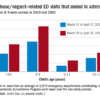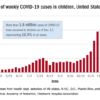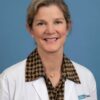Leading in crisis
I have learned a lot about crisis management and leadership in the rapidly changing COVID health care environment. I have learned how to make quick and imperfect decisions with limited information, and how to move on swiftly. I have learned how to quickly fade out memories of how we used to run our business, and pivot to unknown and untested delivery modalities. I have learned how to take regulatory standards as guidance, not doctrine. And I have learned how tell longstanding loyal colleagues that they are being laid off.
Many of these leadership challenges are not new, but the rapidity of change and the weight and magnitude of decision making is unparalleled in my relatively short career. In some ways, it reminds me of some solid lessons I have learned over time as a lifetime runner, with many analogies and applications to leadership.
Some people ask me why I run. “You must get a runner’s high.” The truth is, I have never had a runner’s high. I feel every step. In fact, the very nature of running makes a person feel like they are being pulled under water. Runners are typically tachycardic and short of breath the whole time they are running. But what running does allow for is to ignore some of the signals your body is sending, and wholly and completely focus on other things. I often have my most creative and innovative thoughts while running. So that is why I run. But back to the point of what running and leadership have in common – and how lessons learned can translate between the two:
They are both really hard. As I mentioned above, running literally makes you feel like you are drowning. But when you finish running, it is amazing how easy everything else feels! Similar to leadership, it should feel hard, but not too hard. I have seen firsthand the effects of under- and over-delegating, and both are dysfunctional. Good leadership is a blend of being humble and servant, but also ensuring self-care and endurance. It is also important to acknowledge the difficulty of leadership. Dr. Tom Lee, currently chief medical officer at Press Ganey, is a leader I have always admired. He once said, “Leadership can be very lonely.” At the time, I did not quite understand that, but I have come to experience that feeling occasionally. The other aspect of leadership that I find really hard is that often, people’s anger is misdirected at leaders as a natural outlet for that anger. Part of being a leader is enduring such anger, gaining an understanding for it, and doing what you can to help people through it.
They both work better when you are restored. It sounds generic and cliché, but you can’t be a good runner or a good leader when you are totally depleted.
They both require efficiency. When I was running my first marathon, a complete stranger ran up beside me and started giving me advice. I thought it was sort of strange advice at the time, but it turned out to be sound and useful. He noticed my running pattern of “sticking to the road,” and he told me I should rather “run as the crow flies.” What he meant was to run in as straight of a line as possible, regardless of the road, to preserve energy and save steps. He recommended picking a point on the horizon and running toward that point as straight as possible. As he sped off ahead of me in the next mile, his parting words were, “You’ll thank me at mile 24…” To this day, I still use that tactic, which I find very steadying and calming during running. The same can be said for leadership; as you pick a point on the horizon, keep yourself and your team heading toward that point with intense focus, and before you realize it, you’ve reached your destination.
They both require having a goal. That same stranger who gave me advice on running efficiently also asked what my goal was. It caught me off guard a bit, as I realized my only goal was to finish. He encouraged me to make a goal for the run, which could serve as a motivator when the going got tough. This was another piece of lasting advice I have used for both running and for leadership.
They both can be endured by committing to continuous forward motion. Running and leadership both become psychologically much easier when you realize all you really have to do is maintain continuous forward motion. Some days require less effort than others, but I can always convince myself I am capable of some forward motion.
They both are easier if you don’t overthink things. When I first started in a leadership position, I would have moments of anxiety if I thought too hard about what I was responsible for. Similar to running, it works best if you don’t overthink what difficulties it may bring; rather, just put on your shoes and get going.
In the end, leading during COVID is like stepping onto a new trail. Despite the new terrain and foreign path, my prior training and trusty pair of sneakers – like my leadership skills and past experiences – will get me through this journey, one step at a time.
Dr. Scheurer is chief quality officer and professor of medicine at the Medical University of South Carolina, Charleston. She is president of SHM.






